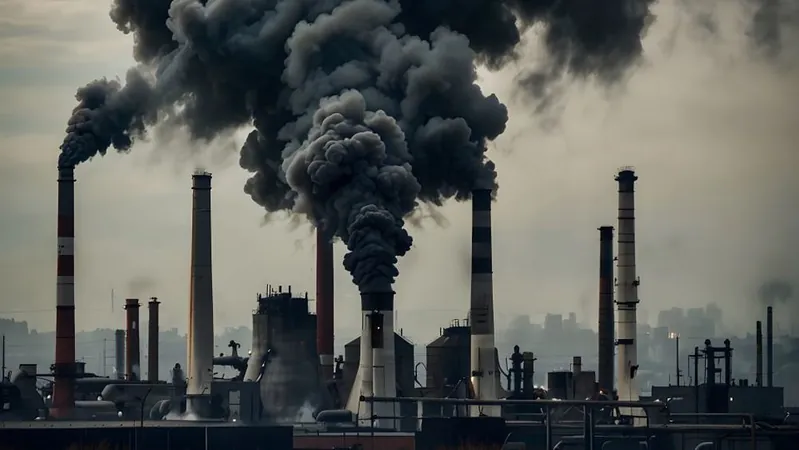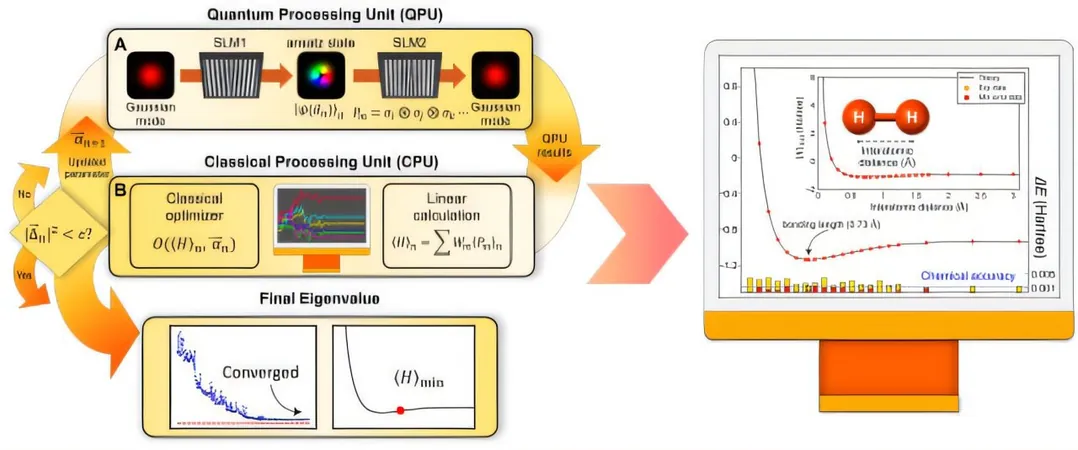
Breakthrough in Carbon Capture: MOF Efficiently Extracts Hot CO2 from Industrial Emissions!
2024-11-18
Author: Liam
Introduction
In a significant stride towards combatting climate change, researchers have developed a groundbreaking metal-organic framework (MOF) capable of capturing carbon dioxide (CO2) from hot industrial exhaust streams, a task long deemed impossible. This innovative MOF has shown exceptional efficiency at high temperatures, marking a potential turning point in carbon capture technology.
Challenges with Existing Technologies
The research, recently published in the prestigious journal Science, highlights the challenges faced by current carbon capture technologies. Traditional methods involve the use of liquid amines, which are effective at temperatures ranging from 40°C to 60°C (100°F to 140°F). However, many industrial processes, including cement manufacturing and steelmaking, produce emissions that exceed 200°C (400°F), with some exhaust reaching as high as 500°C (930°F). Existing carbon capture methods require complex cooling systems to lower these emissions to suitable temperatures, adding significant costs and logistical hurdles.
Significance of the Discovery
"This discovery has the potential to revolutionize how we approach carbon capture," said Kurtis Carsch, a postdoctoral fellow at UC Berkeley and co-author of the study. "Our findings demonstrate that this MOF can effectively capture CO2 at unprecedented temperatures that are commonly produced in industrial processes – something we previously thought was unattainable."
Material Properties and Efficiency
The MOF consists of a crystalline structure formed by metal ions and organic linkers, boasting an internal surface area comparable to the size of six American football fields in just a tablespoon of material. This unique architecture provides a high density of active sites for CO2 capture, optimizing the process even under extreme conditions.
Testing and Results
The researchers conducted tests under simulated conditions representative of emissions from cement and steel production, where CO2 concentrations typically range from 20% to 30%. They also examined emissions from natural gas power plants, which tend to have around 4% CO2. The results were promising, showcasing the MOF's ability to capture CO2 efficiently, even amidst high temperatures.
Unique Aspects of the MOF
One unique aspect of this research is the incorporation of zinc hydride sites into the MOF’s structure, enhancing its stability and reactivity. Co-first author Rachel Rohde elaborated on the significance of this development, stating, "This material allows for deep carbon capture, enabling us to capture 90% or more of the CO2 it encounters, even at elevated temperatures—something that traditional amine-based adsorbents struggle with."
Reusability and Future Prospects
After the CO2 is adsorbed, it can be released by lowering the partial pressure of the gas, either by introducing a different gas or creating a vacuum. This makes the MOF reusable, allowing for multiple adsorption cycles without significant loss of efficiency.
Conclusion
The ability to capture CO2 at high temperatures opens up new avenues for carbon capture technology and positions this MOF as a strong contender in the battle against industrial CO2 emissions. Researchers are currently exploring adaptations of this MOF to target other gases and enhancing its CO2 adsorption capacity. Could this breakthrough lead to new standards in carbon capture technology? Only time will tell, but the implications for global emissions reduction could be monumental!









 Brasil (PT)
Brasil (PT)
 Canada (EN)
Canada (EN)
 Chile (ES)
Chile (ES)
 España (ES)
España (ES)
 France (FR)
France (FR)
 Hong Kong (EN)
Hong Kong (EN)
 Italia (IT)
Italia (IT)
 日本 (JA)
日本 (JA)
 Magyarország (HU)
Magyarország (HU)
 Norge (NO)
Norge (NO)
 Polska (PL)
Polska (PL)
 Schweiz (DE)
Schweiz (DE)
 Singapore (EN)
Singapore (EN)
 Sverige (SV)
Sverige (SV)
 Suomi (FI)
Suomi (FI)
 Türkiye (TR)
Türkiye (TR)